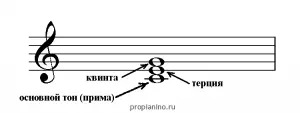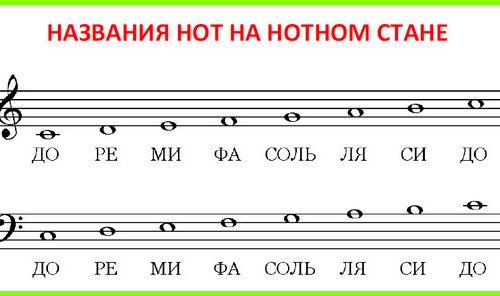
How to learn notes: practical recommendations
The question that worries everyone who begins to learn the musical world is how to learn notes faster? Today we will try to make your life a little easier in the field of learning musical notation. Following simple recommendations, you will see that there is nothing complicated in this work.
First of all, I can state that even professional musicians with impressive playing experience cannot always present information correctly. Why? Statistically, 95% of pianists receive their musical education at the tender age of 5 to 14. Teaching notes, as the basis of the fundamentals, is studied at a music school in the first year of study.
Therefore, people who now know the notes “by heart” and play the most complex works have long forgotten how they got this knowledge, what technique was used. So the problem arises: the musician knows the notes, but he doesn’t quite understand how to learn others.
So, the first thing that must be learned is that there are only seven notes and they have a certain order. “Do”, “re”, “mi”, “fa”, “sol”, “la” and “si”. It is important that the sequence of names must be strictly observed and over time you will know them as “Our Father”. This simple point is very important, because it is the basis of everything.

Open your music book and look at the first line. It consists of five lines. This line is called a stave or staff. Surely you immediately noticed the eye-catching icon on the left side. Many, including those who had not previously read music, had already met him, but they did not attach any importance to this.
This is a treble clef. There are several treble clefs in musical notation: the key “sol”, the key “fa” and the key “do”. The symbol of each of them is a modified image of handwritten Latin letters – G, F and C, respectively. It is with such keys that the staff begins. At this stage of training, you should not go too deep, everything has its time.
Now we pass to more difficult. How do you remember where on the stave which note is located? We start with the extreme rulers, with the notes mi and fa.
To make it easier to learn, we will draw an associative series. This method is especially good for teaching children because it also develops their imagination. Let’s assign these notes to some word or concept. For example, from the names of the notes “mi” and “fa” you can make the word “myth”.
We do the same with other notes. By memorizing this word, you can also memorize notes from it. To remember the location of the notes on the staff, we add one more word. It turns out, for example, such a phrase: “extreme myth.” Now we remember that the notes “mi” and “fa” are on the extreme bands.
The next step is to move on to the three middle rulers and in the same way remember the notes “sol”, “si”, “re”. Now let’s pay attention to the notes that settled between the rulers: “fa”, “la”, “do”, “mi”. Let’s make, for example, an associative phrase “a flask at home between …”.
The next note is D, which is below the bottom ruler, and G is above the top. At the very end, remember the additional rulers. The first extra from the bottom is the note “do”, the first extra from the top is the note “la”.
The signs that are used on staves are signs of alteration, that is, raising and lowering the sound by half a tone: sharp (similar to a lattice), flat (reminiscent of the Latin “b”) and bekar. These signs represent promotion, demotion and cancellation of promotion/demotion respectively. They are always placed before the note being changed or at the key.
That, in fact, is all. I hope that these recommendations will help you master the basics of musical notation as soon as possible and start practicing piano playing technique!
Finally – a simple video for the initial presentation, explaining the position of the notes.





